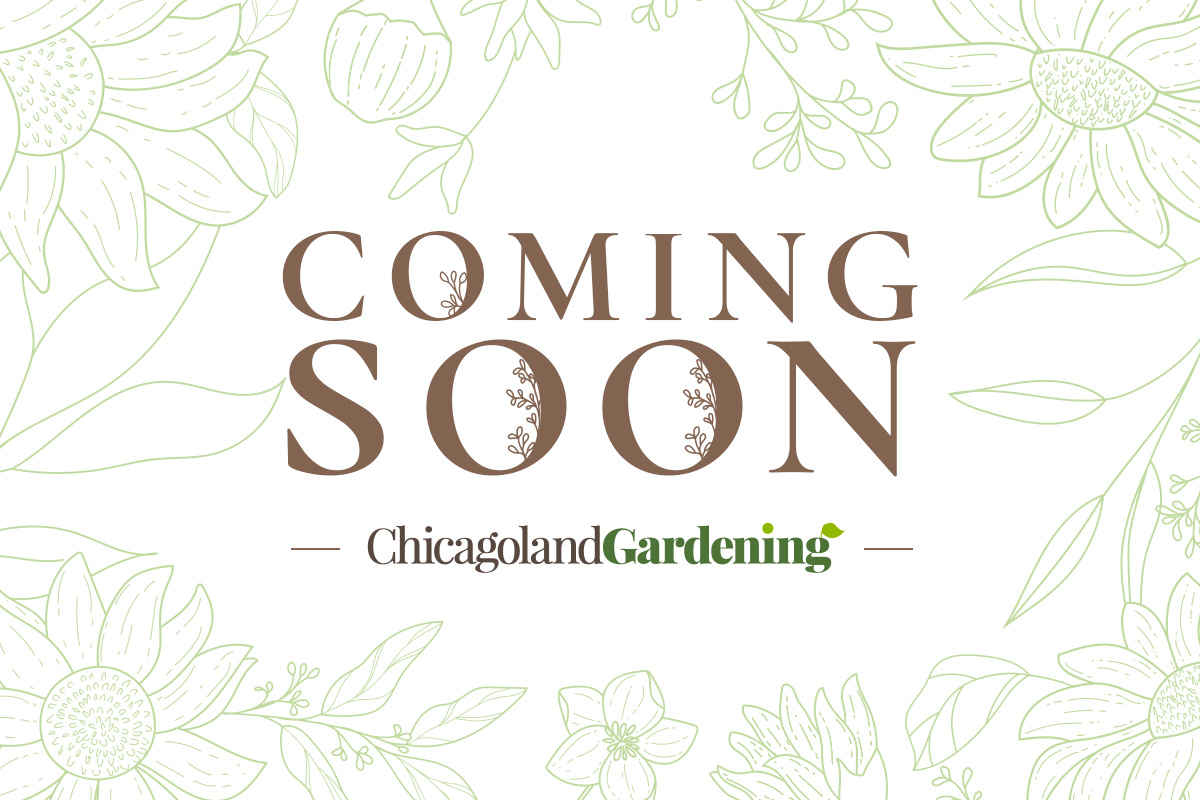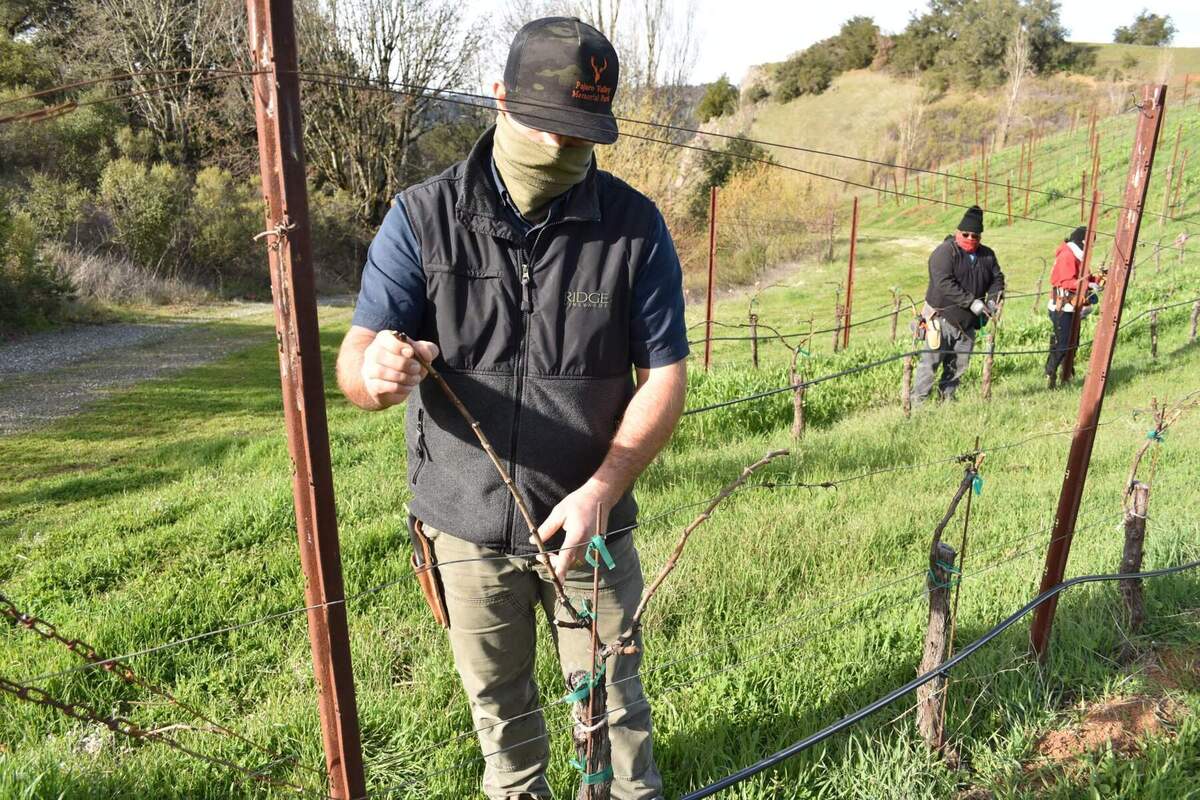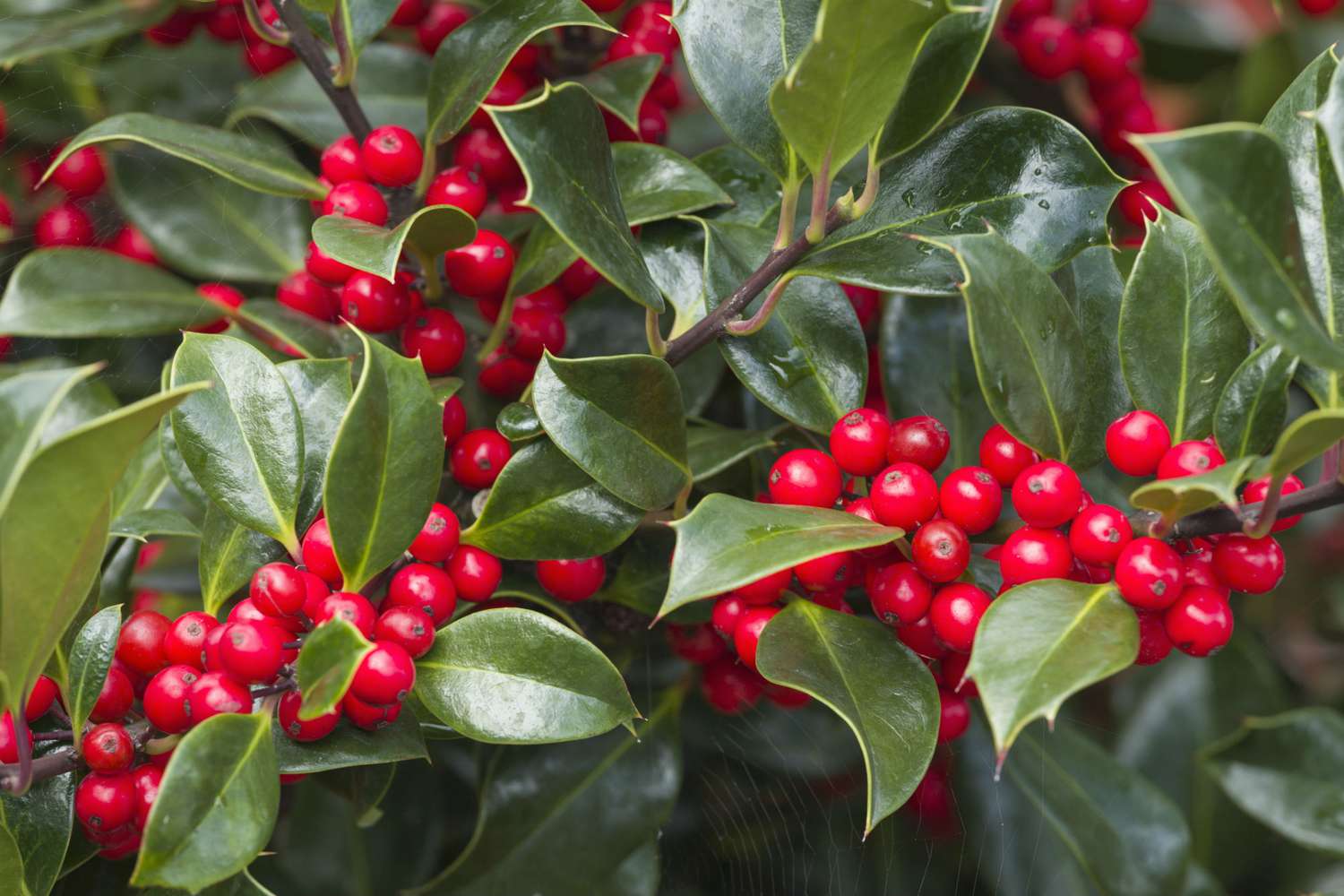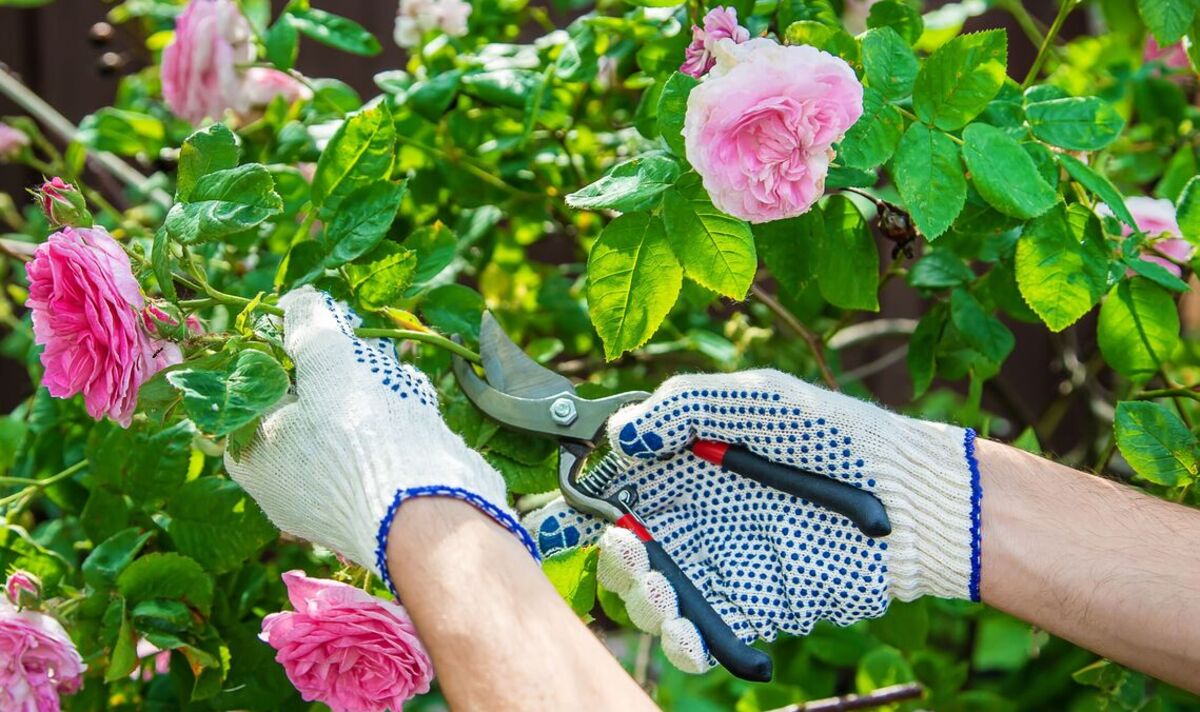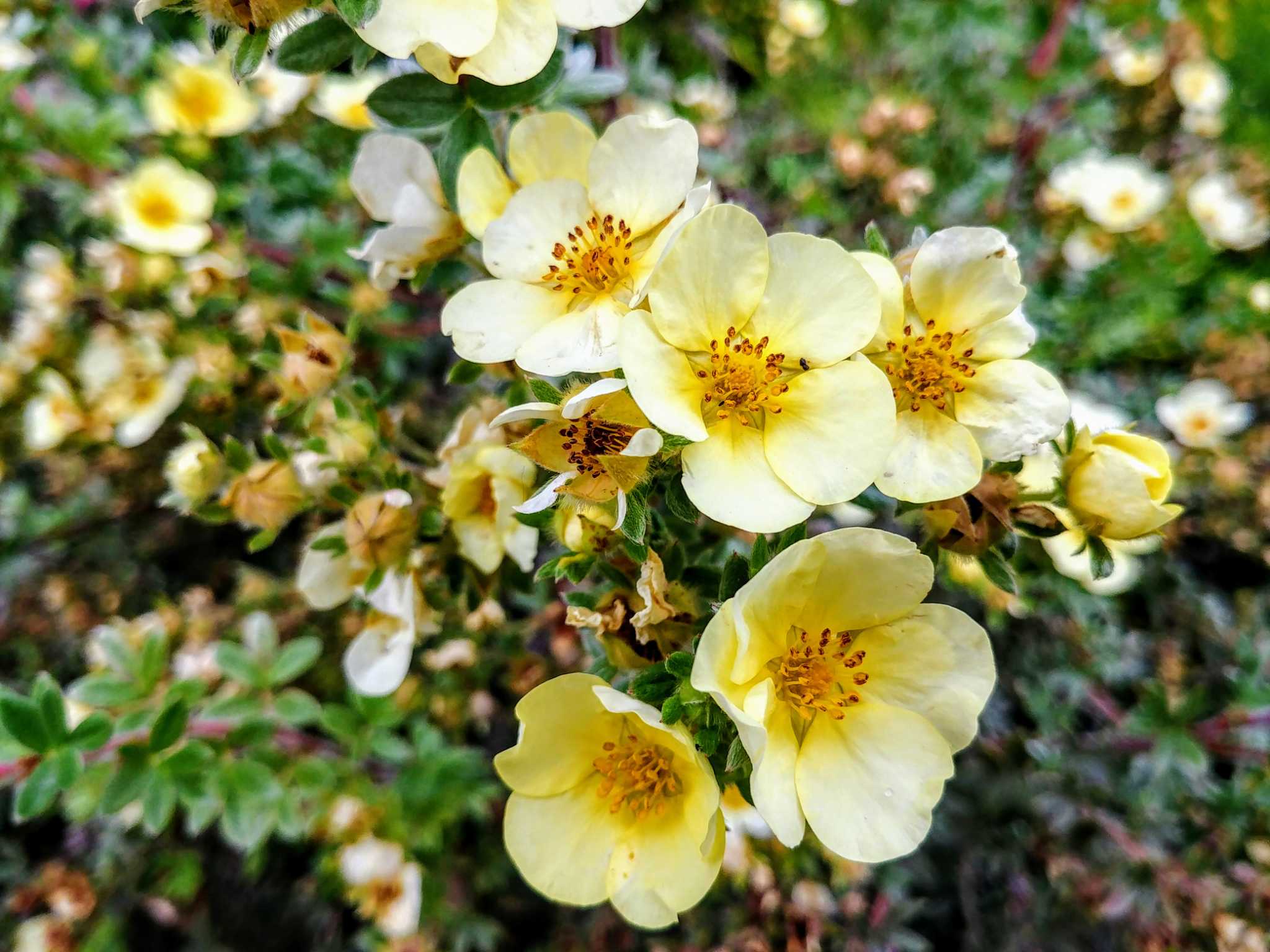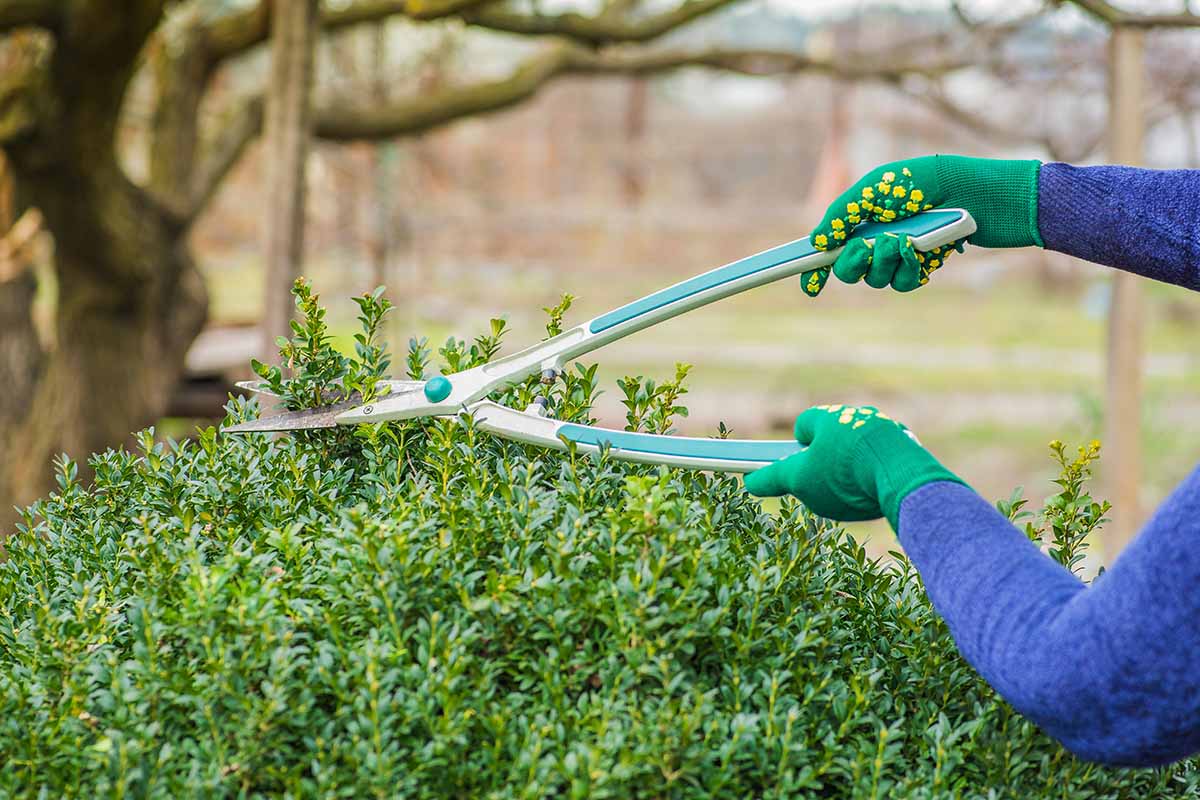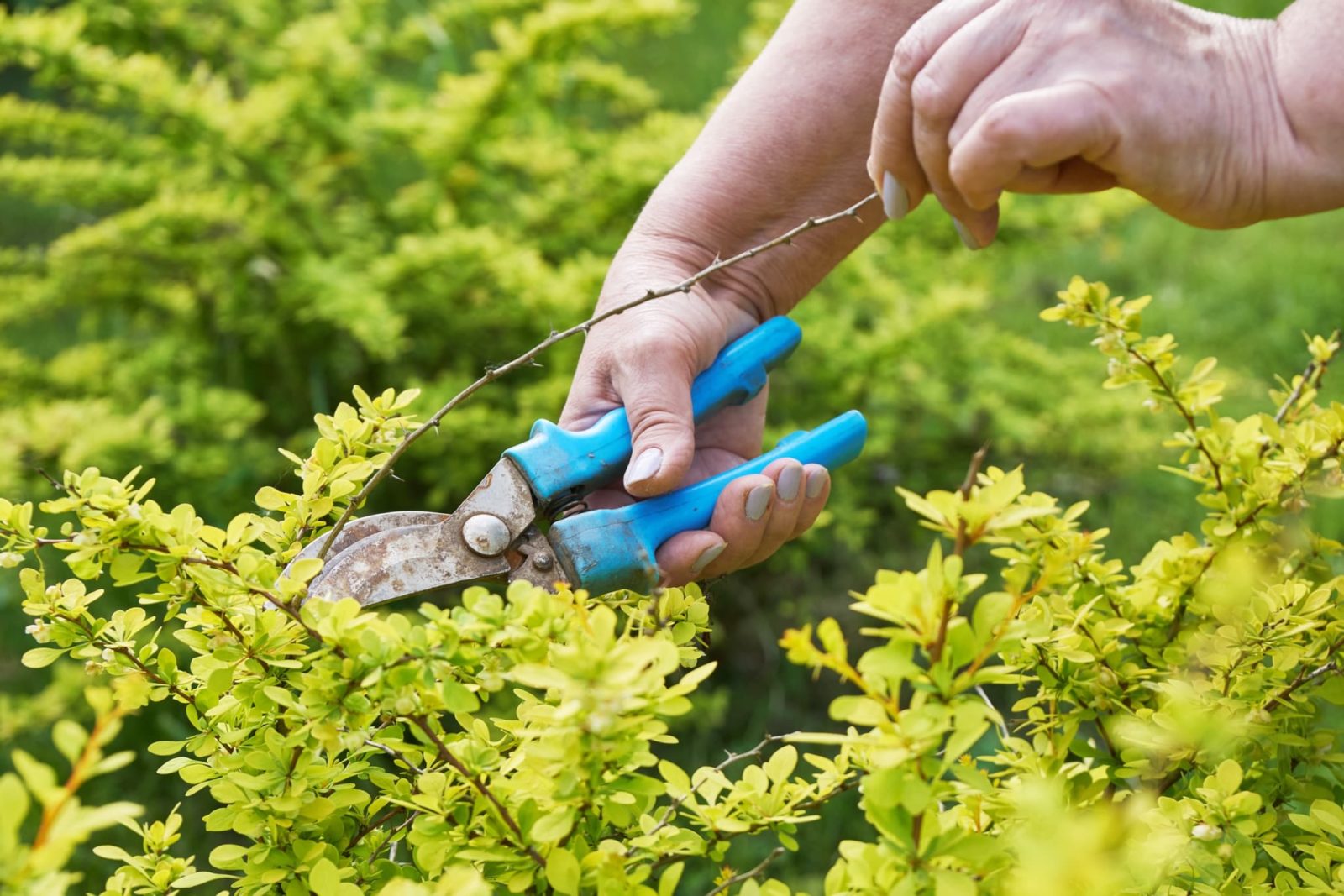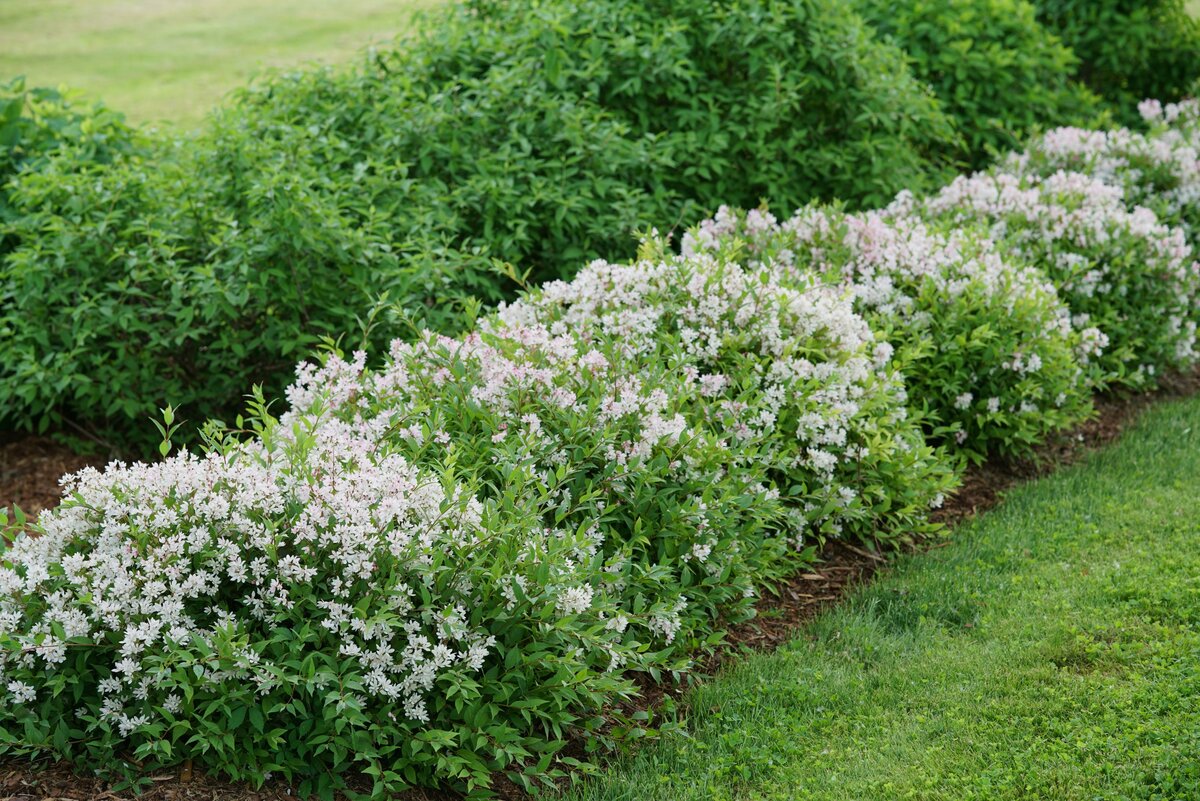Home>Gardening Techniques>Plant Care>What Is Shrub Pruning


Plant Care
What Is Shrub Pruning
Modified: January 22, 2024
Discover the importance of shrub pruning and learn essential plant care tips to maintain healthy and vibrant shrubs. Enhance the overall beauty of your garden with proper pruning techniques.
(Many of the links in this article redirect to a specific reviewed product. Your purchase of these products through affiliate links helps to generate commission for Chicagolandgardening.com, at no extra cost. Learn more)
Table of Contents
Introduction
Welcome to the wonderful world of shrub pruning! Whether you have a small backyard garden or a sprawling landscape, understanding the art of shrub pruning is essential for maintaining healthy and beautiful plants. Pruning not only enhances the aesthetic appeal of your shrubs, but it also promotes their overall health and longevity.
But what exactly is shrub pruning? Simply put, shrub pruning is the act of selectively trimming and shaping shrubs to create a desired form or size. This horticultural practice involves the removal of dead or diseased branches, thinning out dense foliage, and maintaining a balanced structure. By carefully pruning your shrubs, you can control their growth, improve air circulation, and encourage the development of strong, vibrant branches.
Understanding the importance of shrub pruning is crucial for every plant enthusiast. Pruning not only enhances the visual appeal of your shrubs but also improves their overall health. Regular pruning helps remove deadwood, allowing more sunlight and air to reach the inner branches, promoting growth and preventing the spread of diseases. Additionally, pruning encourages new growth, leading to fuller and more robust shrubs.
Knowing when to prune your shrubs is key to achieving optimal results. The timing can vary depending on the specific type of shrub you have. Generally, spring-blooming shrubs should be pruned immediately after they flower, as they produce blooms on the previous year’s growth. On the other hand, summer and fall-blooming shrubs are best pruned in late winter or early spring before new growth begins. It’s important to research and understand the specific pruning needs of your shrubs to ensure they thrive.
Now that we’ve covered the basics, let’s delve deeper into the world of shrub pruning. In the following sections, we will explore the necessary tools and equipment, step-by-step instructions, and common mistakes to avoid. By the end of this article, you’ll be equipped with the knowledge to confidently prune your shrubs and transform your green space into a vibrant and well-maintained oasis.
What is Shrub Pruning?
Shrub pruning is a vital practice in plant care that involves selectively trimming and shaping shrubs to promote their health, aesthetics, and structure. It is a technique used to remove dead or diseased branches, encourage new growth, and maintain a desirable form and size. By pruning shrubs, you can shape them according to your desired design, control their growth, and improve their overall appearance.
One of the main objectives of shrub pruning is to remove deadwood. Dead branches not only mar the beauty of shrubs but can also pose risks, such as falling and causing injury or damage. Pruning deadwood enables the plant to redirect its energy towards healthy growth and development. Regular pruning ensures that your shrubs remain vibrant and free from potential diseases or pests.
In addition to removing deadwood, shrub pruning also helps in thinning out dense foliage. Overgrown shrubs can become too dense, preventing sunlight and air from reaching the inner parts of the plant. This can lead to poor growth and the development of fungal diseases. Thinning out excess foliage allows for better air circulation and light penetration, promoting healthy photosynthesis and reducing the risk of disease.
Moreover, pruning shrubs plays a vital role in shaping their form and size. By selectively trimming branches, you can control the overall shape and appearance of the shrub. This is particularly useful for hedges and topiary, where precise shaping is desired. Pruning also helps to maintain the size of shrubs, preventing them from outgrowing their allocated space and encroaching on other plants or structures.
It’s important to note that different shrubs have varying pruning requirements. Some shrubs, such as lilacs and forsythia, bloom on old wood, meaning they produce flowers on the previous year’s growth. These types of shrubs should be pruned immediately after they finish flowering to avoid removing potential blooms. On the other hand, shrubs that bloom on new wood, like butterfly bushes and hydrangeas, can be pruned more vigorously in late winter or early spring before new growth begins.
Overall, shrub pruning is a fundamental practice in plant care that offers numerous benefits. By removing deadwood, thinning out foliage, and shaping the shrubs, you can enhance their vitality, encourage new growth, and create visually appealing landscapes. With proper knowledge and techniques, you can master the art of shrub pruning and enjoy healthy, beautiful shrubs year after year.
Importance of Shrub Pruning
Shrub pruning is not just about maintaining a neat and well-groomed appearance for your landscape; it actually plays a critical role in the overall health and vitality of your shrubs. Regular pruning is essential for the following reasons:
Promotes Plant Health:
Pruning helps remove dead, damaged, or diseased branches, preventing the spread of diseases and allowing the shrub to allocate energy to healthier areas. By eliminating potential breeding grounds for pests and diseases, pruning preserves the overall health of the shrub and increases its resistance to various environmental stressors.
Encourages Growth and Blooming:
Strategic pruning stimulates new growth, resulting in fuller, denser shrubs with more vibrant foliage and increased flower production. Removing old or nonproductive branches redirects the plant’s energy towards developing strong, healthy shoots and promoting a more balanced growth pattern.
Controls Size and Shape:
Shrub pruning is instrumental in maintaining the desired size and shape of your plants, preventing them from becoming overgrown and overpowering other elements in your landscape. Pruning can also be used to shape shrubs into specific forms, create hedges, or control their growth in confined spaces.
Improves Air Circulation and Sunlight Penetration:
Thinning out dense shrubs through selective pruning creates better air circulation and allows sunlight to reach the inner portions of the plant. This increased airflow and sunlight penetration reduce the risk of fungal diseases, such as powdery mildew, and promote photosynthesis, ensuring healthier and greener foliage.
Enhances Aesthetic Appeal:
Well-pruned shrubs contribute to a visually appealing landscape. Pruning removes unsightly or awkwardly growing branches, creating a more balanced and aesthetically pleasing form. This enhances the overall beauty of your garden and adds value to your property.
Maintains Safety:
Regular pruning helps eliminate dangerous or hazardous branches that may pose a risk to people, structures, or other plants. By removing deadwood or weak branches, you reduce the chances of them breaking and causing injuries or property damage, especially during storms or high winds.
Overall, shrub pruning is a fundamental practice in plant care that offers a multitude of benefits. By promoting plant health, encouraging growth and blooming, controlling size and shape, improving air circulation and sunlight penetration, enhancing aesthetic appeal, and maintaining safety, pruning plays a crucial role in maintaining thriving, beautiful shrubs in your landscape.
When to Prune Shrubs
Timing is crucial when it comes to pruning shrubs. The right time to prune largely depends on the specific type of shrub and its blooming cycle. While some shrubs are best pruned immediately after they finish flowering, others should be pruned during dormancy in late winter or early spring. Here are some general guidelines for when to prune different types of shrubs:
Spring-Blooming Shrubs:
Spring-blooming shrubs, such as lilacs, forsythia, and flowering quince, produce flowers on the previous year’s growth. It is best to prune these shrubs immediately after they finish flowering. Pruning them in late winter or early spring before they bloom will result in the removal of potential flower buds, affecting their blooming performance for that year.
Summer-Blooming Shrubs:
Summer-blooming shrubs, like butterfly bush, hydrangea, and potentilla, bloom on new wood, which means they produce flowers on the current season’s growth. These shrubs can be pruned more vigorously in late winter or early spring when they are still dormant, as it promotes new growth and ensures abundant blooms during the summer months.
Evergreen Shrubs:
Evergreen shrubs, such as boxwood, holly, and yew, can be pruned throughout the year, as needed, to maintain their shape and size. Light pruning can be done in late winter or early spring to remove any winter damage or to shape the shrub before the new growth begins. Avoid pruning too late in the growing season, as it may stimulate tender new growth that could be damaged by frost.
Fall-Blooming Shrubs:
Fall-blooming shrubs, like beautyberry and flowering tobacco, typically bloom on new wood and should be pruned in late winter or early spring. Pruning at this time helps to remove any dead or damaged branches and allows for new growth, ensuring abundant blooms in the fall.
It’s important to remember that these are general guidelines, and specific shrub species may have unique pruning requirements. It is always a good idea to research the particular type of shrub you have and its specific pruning needs for optimal results.
Additionally, it’s worth noting that some light pruning and maintenance, such as removing dead, damaged, or crossing branches, can be done year-round if needed. Regular observation of your shrubs will help identify any pruning needs and allow you to address them promptly.
By adhering to the appropriate timing for shrub pruning, you can ensure that your plants remain healthy, produce abundant blooms, and maintain their desired shape and structure throughout the year.
Tools and Equipment for Shrub Pruning
Having the right tools and equipment is essential for successful shrub pruning. The proper selection and use of these tools can make the pruning process more efficient and help you achieve the desired results. Here are some essential tools for shrub pruning:
Pruning Shears:
Pruning shears, also known as hand pruners or secateurs, are a must-have tool for shrub pruning. These handheld tools are ideal for cutting small branches, twigs, and stems. Look for high-quality shears with sharp, bypass blades that make clean cuts without crushing the plant tissue. Bypass pruners are recommended over anvil pruners, as they minimize the risk of damaging the plant during pruning.
Loppers:
Loppers are a larger and sturdier version of pruning shears, designed for cutting medium-sized branches. They have long handles that provide increased leverage and cutting power. Loppers are suitable for branches that are too thick for pruning shears but not large enough to require a saw. Look for loppers with sharp bypass blades and comfortable handles to make pruning easier and more efficient.
Pruning Saw:
A pruning saw is essential for cutting thick branches that are beyond the capacity of pruning shears or loppers. This tool typically has a curved blade with aggressive teeth that allow for clean and efficient cuts. The blade can be folded for easy storage and transportation. When choosing a pruning saw, consider the length of the blade, the sharpness of the teeth, and the comfort of the handle to ensure smooth and precise cutting.
Hedge Shears or Hedge Trimmers:
For shaping and maintaining hedges or shrubs with dense foliage, hedge shears or hedge trimmers are necessary tools. These tools have long, straight blades that enable you to trim and shape shrubs quickly and evenly. Look for hedge shears with sharp, serrated blades and comfortable handles for easy maneuverability and precise trimming.
Pruning Gloves:
Pruning gloves are an important accessory to protect your hands from thorns, prickly branches, or any other sharp edges while pruning. Choose gloves made of durable and puncture-resistant materials that provide a good grip and allow for dexterity. Properly fitting gloves ensure both comfort and safety during the pruning process.
Protective Eyewear and Ear Protection:
When pruning shrubs, it’s important to protect yourself with safety glasses or goggles to shield your eyes from stray debris and sawdust. Additionally, if using power hedge trimmers or other loud equipment, consider wearing ear protection to safeguard your hearing.
Having a sturdy ladder or step stool may also be necessary for reaching higher branches. Additionally, a broom or rake will come in handy for cleaning up fallen leaves, branches, and other debris after pruning.
Before using any pruning tool, make sure they are clean, sharp, and in good working condition. Dull or damaged tools can make clean cuts more challenging and potentially damage the shrub. Regular cleaning and maintenance of your pruning tools will ensure their longevity and effectiveness.
By using the appropriate tools and equipment, you can make pruning your shrubs a smooth and efficient process, resulting in well-maintained and healthy plants.
Steps for Shrub Pruning
Pruning shrubs is a skill that can be mastered with practice and the right techniques. By following a systematic approach, you can achieve successful pruning results. Here are the steps for effective shrub pruning:
Step 1: Assess the Shrub:
Start by carefully examining the shrub you are about to prune. Identify any dead, damaged, or diseased branches that need to be removed. Take note of the shrub’s natural shape and growth pattern to guide your pruning decisions.
Step 2: Gather the Necessary Tools:
Ensure that you have all the required pruning tools mentioned earlier, such as pruning shears, loppers, a pruning saw, and any others specific to your need. Make sure the tools are clean, sharp, and in good working condition.
Step 3: Prune Dead and Diseased Branches:
Start by removing any dead or diseased branches. Use appropriate tools to make clean cuts just above the branch collar or the base of the stem. Cutting at an angle helps deflect water away from the cut site, reducing the risk of infection.
Step 4: Thin Out Excess Foliage:
Thinning out dense foliage allows better air circulation and sunlight penetration. Remove small, weak, or crossing branches to create a more open and balanced canopy. Aim to retain the shrub’s natural shape and avoid excessive pruning.
Step 5: Control Size and Shape:
If necessary, selectively prune branches to control the size and shape of the shrub. Trim branches just above a bud or leaf node to encourage new growth and prevent stubs. Avoid cutting too far into the main stem, as it can weaken the plant and promote disease.
Step 6: Step Back and Evaluate:
Periodically step back from the shrub while pruning to assess your progress. This allows you to ensure you are achieving the desired shape and structure. It’s easier to make adjustments as you go rather than waiting until the end.
Step 7: Clean Up and Dispose of Debris:
Once you have finished pruning, clean up any fallen leaves, branches, and other debris in and around the shrub. Dispose of the debris properly, either by composting or discarding it, to prevent the spread of diseases or pests.
Step 8: Maintain and Monitor:
Regularly monitor the shrub’s growth and health after pruning. Keep an eye on any new growth patterns, potential diseases, or pest infestations. Prune any further as needed to maintain the desired shape and health of the shrub.
Remember, each shrub may have specific pruning requirements, so be sure to research the particular species for the best approaches and timing. By following these steps and adapting them to your specific shrub, you can achieve successful pruning results and promote the overall health and beauty of your plants.
Common Mistakes to Avoid in Shrub Pruning
Pruning shrubs can be a rewarding task when done correctly, but it’s important to avoid common mistakes that can harm the plant or compromise its health and appearance. Here are some common mistakes to avoid in shrub pruning:
Over-Pruning:
One of the most common mistakes is over-pruning, which involves removing too much foliage or branches. Over-pruning can weaken the shrub and hinder its ability to photosynthesize effectively, leading to stunted growth and reduced vigor. It’s crucial to prune selectively and in moderation, maintaining the shrub’s natural shape and structure.
Incorrect Timing:
Pruning at the wrong time can affect the shrub’s blooming performance. It’s essential to understand the specific pruning requirements of your shrub, including whether it blooms on old wood or new wood. Pruning spring-blooming shrubs immediately after they flower ensures you don’t remove potential blooms for the following year, while summer-blooming shrubs can be pruned in late winter or early spring while dormant.
Improper Cutting Technique:
Cutting branches too close or too far from the main stem can harm the shrub. Improper cutting can create stubs that are vulnerable to diseases and pests or weaken the plant by removing too much healthy tissue. Make clean cuts just above a bud or leaf node, and avoid cutting into the branch collar or main stem.
Straight Cuts on Shrub Tops:
Making straight cuts on the tops of shrubs creates a flat or squared-off appearance that can be unattractive and disrupt the natural growth pattern. Instead, aim for a more rounded or tapered shape, following the shrub’s natural form. This will result in a more aesthetically pleasing and healthier shrub overall.
Using Dull or Incorrect Tools:
Using dull or incorrect tools can lead to ragged cuts, which are more prone to disease and slower healing. Make sure your pruning tools are sharp, clean, and appropriate for the size and type of branches you are cutting. Dull tools can cause unnecessary damage to the shrub and make the pruning process more challenging and less effective.
Excessive or Inadequate Pruning:
It’s important to strike the right balance when pruning shrubs. Excessive pruning can remove too much foliage and affect the shrub’s ability to produce energy through photosynthesis. On the other hand, inadequate pruning may lead to a dense and overgrown shrub with poor air circulation and increased vulnerability to diseases and pests. Regular and moderate pruning will help maintain a healthy, well-balanced shrub.
Failure to Clean and Maintain Tools:
Skipping the cleaning and maintenance of pruning tools can contribute to the spread of diseases from one plant to another. It’s essential to clean your tools between plants and regularly remove any sap, debris, or rust. Keeping your tools in good condition ensures clean cuts and reduces the risk of transmitting diseases.
By avoiding these common mistakes and following proper pruning techniques, you can ensure the health, aesthetics, and longevity of your shrubs. Regular observation and understanding the specific needs of your shrubs will also contribute to successful and effective pruning.
Conclusion
Shrub pruning is an essential practice for maintaining healthy, beautiful, and well-structured shrubs in your garden or landscape. By understanding the importance of shrub pruning, knowing when to prune, using the right tools, and following proper techniques, you can achieve successful results.
Pruning shrubs not only enhances their aesthetic appeal but also promotes their overall health and longevity. Removing deadwood, thinning out dense foliage, and controlling size and shape all contribute to the health and vitality of the shrub. Regular pruning stimulates new growth, increases air circulation, improves sunlight penetration, and prevents diseases.
When pruning shrubs, it’s important to avoid common mistakes such as over-pruning, improper timing, incorrect cutting techniques, and using dull or incorrect tools. By following best practices and adapting them to the specific needs of your shrubs, you can ensure their successful growth and development.
Remember, no two shrubs are exactly alike, and each may have unique pruning requirements. It’s essential to research and understand the specific needs of your shrubs, including their blooming patterns and growth habits. Regular observation and monitoring will enable you to identify any pruning needs and address them promptly.
By investing time and effort into shrub pruning, you can create a visually appealing landscape, enhance plant health, and enjoy the beauty and benefits of well-maintained shrubs. So, put on your gardening gloves, grab your pruning tools, and embark on the journey of shaping and nurturing your shrubs to their full potential.
